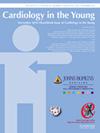缩小儿科和先天性心脏病导管术可接受水平与理想水平之间的差距--全球视角
IF 0.9
4区 医学
Q4 CARDIAC & CARDIOVASCULAR SYSTEMS
引用次数: 0
摘要
在最近几期的《心血管血管造影和介入学会杂志》和《美国心脏病学会杂志》上,Holzer 及其同事发表了题为 "PICS / AEPC / APPCS / CSANZ / SCAI / SOLACI:心导管专家共识声明 "的专家共识文件:Holzer 及其同事发表了一份专家共识文件,题为:"PICS / AEPC / APPCS / CSANZ / SCAI / SOLACI:关于先天性心脏病儿科患者和成人患者心导管检查的专家共识声明"。这份专家共识文件是对儿科和先天性心脏病护理界的重大贡献。这份文件是由儿科和先天性介入心血管学会、欧洲儿科和先天性心脏病学协会、亚太儿科心脏病学会、澳大利亚和新西兰心脏病学会、心血管血管造影和介入学会、拉丁美洲介入心脏病学会以及先天性心脏麻醉学会和美国医学物理学家协会共同制定的专家共识文件。正如本专家共识文件序言中的完美表述:"本专家共识文件旨在向从业人员、付款人、医院管理者和其他各方通报上述学会关于先天性心脏病儿科和成人患者心导管检查和经导管治疗最佳实践的意见,并为资源有限的环境提供更多的便利"。这份专家共识文件的作者包括全球代表,这一点值得注意、赞扬和重视。这份专家共识文件有可能填补这一患者群体的重要空白。目前确实存在针对儿科心脏病患者干预措施特定方面的国家指导文件,包括培训指南。然而,目前这份由 Holzer 及其同事撰写的专家共识文件为儿科患者和先天性心脏病 (CHD) 成人患者提供了真正全球适用的心导管术标准。我们目前的社论提供了来自欧洲、亚太地区、拉丁美洲、澳大利亚/新西兰和北美的儿科和先天性心脏病资深医师的不同地区观点。为患有先天性心脏病的儿童和成人建立全球心导管实验室标准是提高医疗质量和一致性的重要一步。这些标准不仅应反映当前的医学知识水平,还应适应未来的发展,最终促进更好的治疗效果,改善全球先天性心脏病患者的生活。确保这些标准可在全球不同的医疗环境中使用和适应是至关重要的一步。鉴于全球资源和基础设施的差异,需要灵活调整以实施建议。专家共识文件》及其建议的潜在影响可能很大,但医疗保健系统的异质性将给医疗保健专业人员带来持续的挑战。事实上,医疗保健系统的异质性将对医疗保健专业人员提出挑战,以最终缩小儿科和/或先天性心脏病患者导管术中可接受与理想之间的差距。本文章由计算机程序翻译,如有差异,请以英文原文为准。
Closing the gap between acceptable and ideal in catheterisation for paediatric and congenital heart disease—A global view
In recent issues of the Journal of the Society for Cardiovascular Angiography and Interventions and the Journal of the American College of Cardiology: Cardiovascular Interventions , Holzer and colleagues presented an Expert Consensus Document titled: “PICS / AEPC / APPCS / CSANZ / SCAI / SOLACI: Expert consensus statement on cardiac catheterization for pediatric patients and adults with congenital heart disease. ” This Expert Consensus Document is a massively important contribution to the community of paediatric and congenital cardiac care. This document was developed as an Expert Consensus Document by the Pediatric and Congenital Interventional Cardiovascular Society, the Association for European Paediatric and Congenital Cardiology, the Asia-Pacific Pediatric Cardiac Society, the Cardiac Society of Australia and New Zealand, the Society for Cardiovascular Angiography and Interventions, and the Latin American Society of Interventional Cardiology, as well as the Congenital Cardiac Anesthesia Society and the American Association of Physicists in Medicine. As perfectly stated in the Preamble of this Expert Consensus Document, “This expert consensus document is intended to inform practitioners, payors, hospital administrators and other parties as to the opinion of the aforementioned societies about best practices for cardiac catheterisation and transcatheter management of paediatric and adult patients with congenital heart disease, with added accommodations for resource-limited environments.” And, the fact that the authorship of this Expert Consensus Document includes global representation is notable, commendable, and important. This Expert Consensus Document has the potential to fill an important gap for this patient population. National guideline documents for specific aspects of interventions in patients with paediatric heart disease, including training guidelines, do exist. However, this current Expert Consensus Document authored by Holzer and colleagues provides truly globally applicable standards on cardiac catheterisation for both paediatric patients and adults with congenital heart disease (CHD). Our current Editorial provides different regional perspectives from senior physicians dedicated to paediatric and congenital cardiac care who are practicing in Europe, the Asia-Pacific region, Latin America, Australia/New Zealand, and North America. Establishing worldwide standards for cardiac catheterisation laboratories for children and adults with CHD is a significant stride towards improving the quality and consistency of care. These standards should not only reflect the current state of medical knowledge but should also be adaptable to future advancements, ultimately fostering better outcomes and enhancing the lives of individuals affected by CHD worldwide. Ensuring that these standards are accessible and adaptable across different healthcare settings globally is a critical step. Given the variability in resources and infrastructure globally, the need exists for flexibility and tailoring to implement recommendations. The potential impact of the Expert Consensus Document and its recommendations is likely significant, but heterogeneity of healthcare systems will pose continuing challenges on healthcare professionals. Indeed, this heterogeneity of healthcare systems will challenge healthcare professionals to finally close the gap between acceptable and ideal in the catheterisation of patients with paediatric and/or congenital heart disease.
求助全文
通过发布文献求助,成功后即可免费获取论文全文。
去求助
来源期刊

Cardiology in the Young
医学-小儿科
CiteScore
1.70
自引率
10.00%
发文量
715
审稿时长
4-8 weeks
期刊介绍:
Cardiology in the Young is devoted to cardiovascular issues affecting the young, and the older patient suffering the sequels of congenital heart disease, or other cardiac diseases acquired in childhood. The journal serves the interests of all professionals concerned with these topics. By design, the journal is international and multidisciplinary in its approach, and members of the editorial board take an active role in the its mission, helping to make it the essential journal in paediatric cardiology. All aspects of paediatric cardiology are covered within the journal. The content includes original articles, brief reports, editorials, reviews, and papers devoted to continuing professional development.
 求助内容:
求助内容: 应助结果提醒方式:
应助结果提醒方式:


